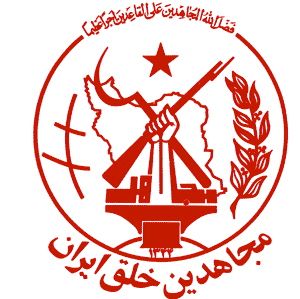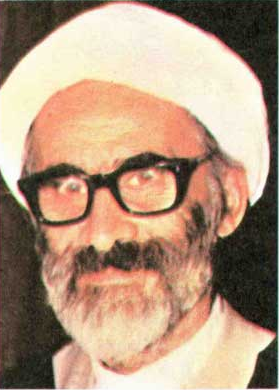Academic reviews
Sepehr Zabih opined that the book is “a valuable addition to the literature on the Iranian Left”, but it criticized it for not analysing in more depth aspects like voting data during the Iranian revolution. [11]
Misagh Parsa said that the book is a superb analysis of the MEK as an important Islamic movement. The book covers a broad picture of Iranian politics, also observing the actions of the Pahlavi and the Islamic Republic regimes. Parsa finds that “while one may disagree with some of his concepts, statistics, and interpretations, Abrahamian has made an indisputable contribution to understanding not only the Mojahedin, but also Iranian politics and theories of the state and ideology in general.” [10]
Eric Hooglund finds the book "very important", "rich in details" and "must reading for anyone who is interested in contemporary Iran" in his review for Iranian Studies . [8] According to Hooglund, the book’s most important contribution is its analysis of the MEK’s ideology (before and after the revolution), something that had been “shrouded in mystery, misconceptions and deliberate misinformation.” [8]
Reza Afshari's review in Middle East Studies Association Bulletin indicates that conclusions made by Abrahamian on his examination of the social bases of the MEK, is consistent with findings of other scholars studying Islamist movements in other countries. [6] He points that the author "richly narrates" the history of the MEK, but "may have inflated the extent of mass support". [6]
Mansour Farhang describes the work as a "learned, lucid and cogent piece" and also a "masterful exposé" of MEK's history in a review published by Middle East Report . [5] He specifically finds the part discussing Ali Shariati and his relationship to the MEK's ideology a strength for the book. [5] According to Farhand, "Abrahamian does not impose labels on complex phenomena” but “meticulously probes the anatomy of the Mojahedin and the course of its development. [5]
Oliver Leaman, in his review for British Society for Middle Eastern Studies Bulletin , praises Abrahamian for his detailed and in-depth discussions, describing the book as "a highly successful blend of historical analysis and political understanding" and "an exceptionally interesting book on a difficult subject". [7] He acknowledges that the book could have benefited from further analysis of the relationship between the MEK and Iraq or comparing the MEK’s activities with those of other revolutionary groups in different countries. [7] Leaman concludes that the disadvantages "reduce the scope, but not the quality, of this remarkable book". [7]
A. R. H. Kellas says in his Asian Affairs review that the book is "one of the best of so many books about Iran today" and applauds it for "thoughtful analysis" and "sympathetic understanding of Iranian society". [1] According to him, background of the author imposes no religious prejudices in investigating the MEK. [1] He also finds combined usage of Iranian and Western sources, another advantage. [1]
Anthony Hyman opined in International Affairs that “this is the most objective and comprehensive study available of this important Iranian movement from its origins to present”, where the author aims to remain objective without seeking to judge the group. [12]
Mangol Bayat calls it "a sober, and sobering, account of the history" and "of great importance to all historians of modern Iran and modern Islamic political movements" in The American Historical Review . [2] Regarding the author's bias, Bayat opines "indeed, he refrains from doing so [writing partially] whenever possible." [2]
In reviewing the work for Die Welt des Islams , Michel M. Mazzaoui describes the book as the second volume for Abrahamian's Iran Between Two Revolutions (1982) and concludes that "there is very little to criticize in this masterfully written piece of current research. Dr. Abrahamian writes sympathetically and at times dramatically—but always as an accomplished scholar". [3] According to Mazzaoui, the author has most certainly did his best to be unbiased and leave the final judgment for the reader. [3]
David Menashri, writing a review for Middle Eastern Studies , says the author's approach is "quite distinctive" and successful in answering questions by clarifying major aspects of the Iranian Revolution. [4] According to Menashri, the book is a "pioneering study" and a "unique contribution", in particular the MEK’s social background in the context of political, social, ideological, economic, and international developments. [4] He also maintains that despite the MEK’s importance, little had been written about them, and much of it had been ‘polemical, misleading and sometimes simply wrong’. Menashri says that the Abrahamian succeeded in answering the questions that the author set out to analyse: “the social background of the organization’s founders”; “the main feature of the ideology”; “how they managed to attract ‘a mass following’ but failed to gain political power”; and “what the appeal of Mojahedin was and what groups in particular were drawn towards its ranks”. [4] Menashri concludes that the book is "highly valuable and extremely helpful in enabling a better understanding of this movement [=MEK]". [4]
In a review published by Journal of the American Academy of Religion , William R. Darrow comments that the author's discussion of Ali Shariati's works and their relationship with the MEK's ideology is notable, praising the "very useful book" for paying attention to both ideology and organization of the group in the analyses. [13]
Asef Bayat wrote in 1990 that "by far the best discussion of Shariati" was offered by Abrahamian in this book. [14]
Other reviews
D. Pipes wrote in Choice Reviews that the book "has its share of problems, but, as the first full-length treatment of this topic, it is enormously valuable for the masses of data it brings to light and for its insights into the vagaries of life in the Iranian opposition". [15]
A review of the book published by The Economist , says the "book is important and useful not only because it is the first in English on its subject, but also because... it is objective", and also finds the fact that the author is an ethnic Armenian, not a Shia, worth noting. [9]
Writing for the Israeli newspaper The Jerusalem Post , Nissim Rejwan opined that Abrahamian's book offers useful insights on the MEK movement, telling "the story of the revolution from the inside". [16]
In 1990, Association of Committed Professors of Iranian Universities, a UK-based organization affiliated with the MEK self-published a 96-page critique titled Facts and Myths on the People's Mojahedin of Iran with the explanatory title Examples of the Lies, Distortions, and Fabrications in Ervand Abrahamian's The Iranian Mojahedin. According to authors Boer, Tom de; Zieck, Marjoleine, this critique included ad hominem of Abrahamian. [17]













